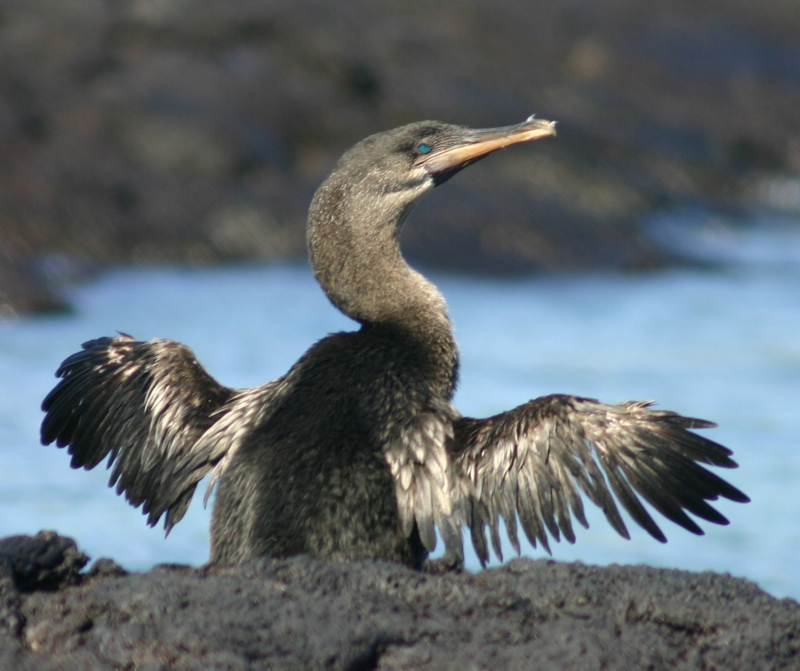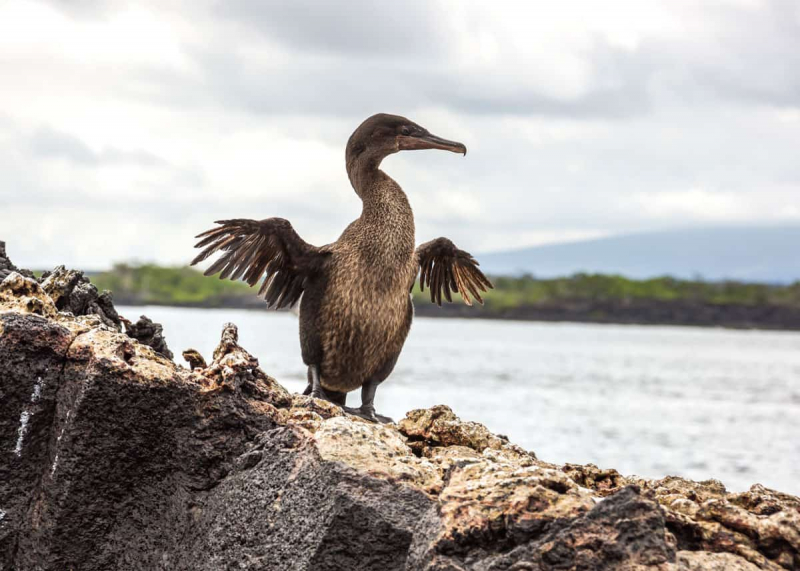Flightless Cormorant
In addition to being the biggest cormorant species among the 29 species, the Galapagos flightless cormorant is unique to the Galapagos Islands. They are restricted to the lava shoreline and beaches of Isabela and Fernandina because, as their name implies, they are unable to fly. The adults have brilliant blue eyes and are black on top and dark brown below. They have wings that are stunted and only a third the size of what they would need to fly. They all have four webbed toes, and the females are typically smaller than the males in the cormorant family. Due to the lack of terrestrial predators and the success of individuals who were better adapted to swimming in passing on their genes, natural selection caused the species to lose the ability to use their wings.
On Isabela and Fernandina, there are presently about 1,000 breeding pairs of flightless cormorants. While the cormorant hops from rock to rock along the coast, their stubby wings are employed for balance. They have lost some of their waterproofing because their wings don't produce a lot of oil, so after a dive, it's common to observe them holding their wings out to dry.
They mostly eat eels and octopus, which they find via deep diving to the ocean floor. Instead of "flying" underwater as penguins do, they tuck their wings down and kick with their powerful hind legs while using their flexible necks to spearfish and octopus from small caves and shelters in the reefs and rocks. They are submerged quite deeply, with only their necks visible from a distance.













